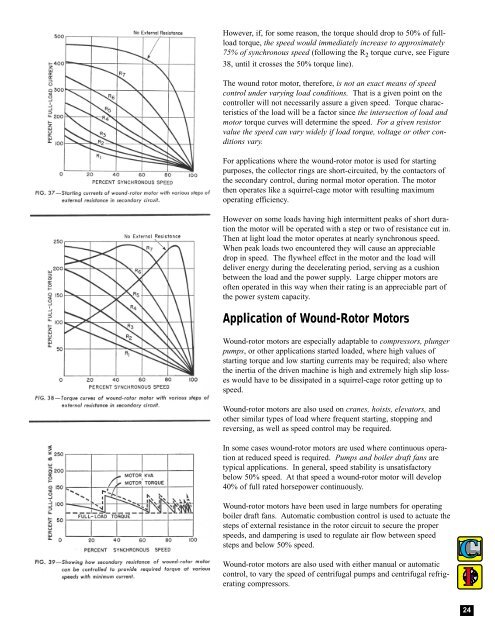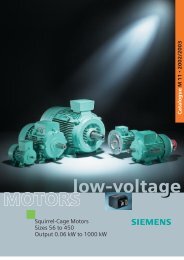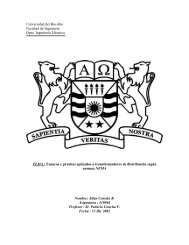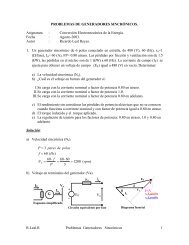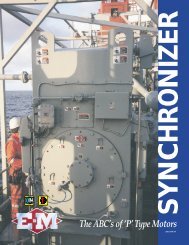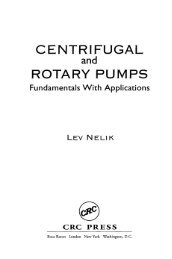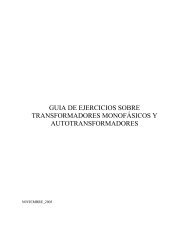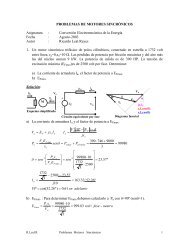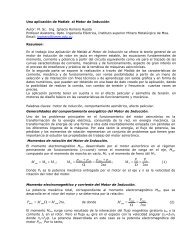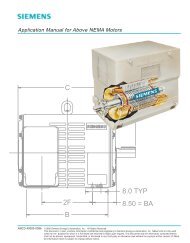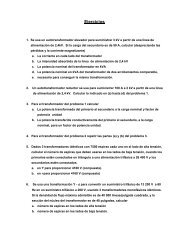Induction Motors
Induction Motors
Induction Motors
Create successful ePaper yourself
Turn your PDF publications into a flip-book with our unique Google optimized e-Paper software.
However, if, for some reason, the torque should drop to 50% of fullloadtorque, the speed would immediately increase to approximately75% of synchronous speed (following the R 2 torque curve, see Figure38, until it crosses the 50% torque line).The wound rotor motor, therefore, is not an exact means of speedcontrol under varying load conditions. That is a given point on thecontroller will not necessarily assure a given speed. Torque characteristicsof the load will be a factor since the intersection of load andmotor torque curves will determine the speed. For a given resistorvalue the speed can vary widely if load torque, voltage or other conditionsvary.For applications where the wound-rotor motor is used for startingpurposes, the collector rings are short-circuited, by the contactors ofthe secondary control, during normal motor operation. The motorthen operates like a squirrel-cage motor with resulting maximumoperating efficiency.However on some loads having high intermittent peaks of short durationthe motor will be operated with a step or two of resistance cut in.Then at light load the motor operates at nearly synchronous speed.When peak loads two encountered they will cause an appreciabledrop in speed. The flywheel effect in the motor and the load willdeliver energy during the decelerating period, serving as a cushionbetween the load and the power supply. Large chipper motors areoften operated in this way when their rating is an appreciable part ofthe power system capacity.Application of Wound-Rotor <strong>Motors</strong>Wound-rotor motors are especially adaptable to compressors, plungerpumps, or other applications started loaded, where high values ofstarting torque and low starting currents may be required; also wherethe inertia of the driven machine is high and extremely high slip losseswould have to be dissipated in a squirrel-cage rotor getting up tospeed.Wound-rotor motors are also used on cranes, hoists, elevators, andother similar types of load where frequent starting, stopping andreversing, as well as speed control may be required.In some cases wound-rotor motors are used where continuous operationat reduced speed is required. Pumps and boiler draft fans aretypical applications. In general, speed stability is unsatisfactorybelow 50% speed. At that speed a wound-rotor motor will develop40% of full rated horsepower continuously.Wound-rotor motors have been used in large numbers for operatingboiler draft fans. Automatic combustion control is used to actuate thesteps of external resistance in the rotor circuit to secure the properspeeds, and dampering is used to regulate air flow between speedsteps and below 50% speed.Wound-rotor motors are also used with either manual or automaticcontrol, to vary the speed of centrifugal pumps and centrifugal refrigeratingcompressors.24


